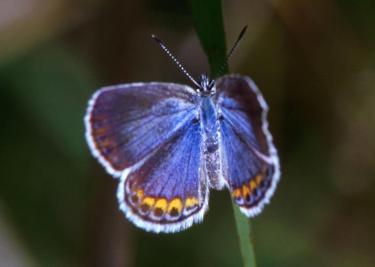Why Young Forests Are Important
For woodland wildlife, young forests are a sanctuary. Here, animals find food, cover, and places to nest or rear their young. The insects, berries and shoots so abundant in this landscape feed many kinds of creatures, from small rodents to deer, moose and bears.
When young forests mature or disappear, animals lose this critical habitat. In fact, at least 89 species of birds, mammals, and reptiles have declined over the past century because young forests aren’t as common as they used to be.
Some animals that depend on young forests include:
- Black bears
- Bobcats and Canada lynx
- Elk, moose and white-tailed deer
- Cottontail rabbits, snowshoe hares, mice and other small mammals
- The endangered Karner blue butterfly
- The wood turtle, one of the most endangered freshwater turtles in North America
- Ruffled grouse, American woodcock and other declining bird species
- Many songbirds, including blue-winged and golden-winged warblers, eastern towhees, Nashville warblers, brown thrashers, and prairie warblers
In addition, young forests are home to a number of rare plants and insects.
But these landscapes don’t just benefit wildlife—they benefit people too. Like other types of woodland, young forests help stabilize our soil and keep our air and water clean. They also offer opportunities for recreation and a renewable source of timber, both of which support local economies.
Young forests need a little help to continue to provide all these benefits. And woodland owners can give that help by creating and keeping young forests on their land.
How can I get more tips?
It’s simple! Enter your email below.

